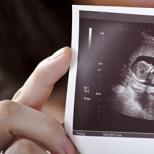Gynecological kit, what's in it. How to use a gynecological kit. Gynecological examination
Without a gynecological kit, it is difficult to imagine a full-fledged appointment with a gynecologist.
Basic gynecological set
Let's look at what is included in the gynecological kit and what variations there are in the kits. Disposable gynecological kits are available in several configuration options. Their contents are similar, however, some have additional components for taking diagnostic smears.
The basic sterile disposable gynecological kit includes the following components:
- sterile latex gloves;
- padding diaper;
- Cusco mirror, which is used to examine the mucous membrane of the walls of the vagina and cervix.
Unlike a standard metal mirror used for inspection in antenatal clinic, the mirror from the set is made of transparent plastic. It is intended for single use and cannot be sterilized.
Variations of disposable gynecological sets
All gynecological examination kits include the components listed above. The only difference from the basic set is the presence of additional disposable tools.
Let's consider the main options for disposable gynecological examination kits and their configuration. In addition to the basic components, such sets include the following additions:
- Gynecological set with Ayer spatula. Such a plastic spatula is characterized by the presence of a surface with micropores, which is necessary for better fixation of the material under study on the instrument. It is used to take material from the surface of the mucous membrane of the cervix, cervical canal and vaginal walls.
- Gynecological set with Volkmann spoon. This tool consists of a handle, at the ends of which there are working parts in the form of spoons. The Volkmann spoon is often used in gynecology and venereology to collect material from the surface of the mucous membrane of the cervix, as well as from the cervical and urethra.
- Gynecological set with a cytobrush, which is designed to collect material from the superficial part of the mucous membranes. The cytobrush consists of a handle and a working part covered with soft elastic bristles. If necessary, the working part can be bent at the required angle. This structure of the tool allows you to conveniently and painlessly assemble a large number of material for analysis. The cytobrush is an integral part of the gynecological kit for nulliparous women, as it allows you to carefully, without injury, take material for.
- A gynecological set, which, in addition to the basic set, includes all the listed instruments: cytobrush, Volkmann spoon, Ayer spatula. The set also includes two glass slides.
Selecting a gynecological set by size
When choosing a set, you need to pay attention to its size. This mainly concerns the size of the Cusco plastic mirror. According to this principle, gynecological sets differ in the size and width of the speculum valves. The following sizes are available:

For nulliparous women, it is enough to use mirrors small sizes. But if there is a history of childbirth, the use of larger mirrors is justified.
Of course, when going to an appointment with a gynecologist, you can take a diaper and a pair of gloves with you. A gynecological speculum can be found in any specialist’s office. But an already assembled individual gynecological kit will be more convenient to use. In addition, it is sterile and intended for disposal after one use.
Let us remind you that you need to go to the gynecologist 1-2 times a year, even if the woman is not worried about anything. Of course, few adhere similar rules. The main reasons for this situation are: lack of time to go to the doctor, fear of detecting the disease, shame due to the specificity of the procedure itself.
We want to help you, dear women, overcome some physical and mental discomfort by introducing you to the nuances of preparing a visit to the gynecologist.
Before visiting the doctor, empty your bladder, and, if possible, the intestines, especially if the line at the examination room was long and you had to wait a long time.
It is very important to remember that you need to take a shower (or bath) in advance, but do not wash yourself too thoroughly, since the doctor must see the vaginal microflora in its normal, everyday state. It is strictly forbidden to douche (introduce water, and especially antiseptic substances into the vagina using a douche) since douching will deprive the doctor of the opportunity to evaluate vaginal discharge, which is very informative for a specialist and a smear taken after douching will also be, to put it mildly, not informative. It is not recommended to use special intimate deodorants or perfumes.
It is advisable to abstain from sexual intercourse the day before visiting the gynecologist, since it often remains in the vagina. a small amount of seminal fluid, which prevents a reliable analysis.
The most suitable period for examination is the first days after menstruation. You should not visit a doctor during your period, unless it is a force majeure event (for example, bleeding accompanied by severe pain).
Just in case, take with you a gynecological kit (they are now sold in all pharmacies), it includes: a diaper and sterile gloves, sometimes a gynecological speculum. You can take socks with you from home so that when you prepare for the examination in the office, you don’t have to walk barefoot on the floor to the gynecological chair.
It is important to understand that at an appointment with a gynecologist you should honestly and openly answer questions regarding intimate specifics. After all, the doctor’s main focus is your health, not your lifestyle. A true specialist will never allow himself any judgment, but on the contrary, will try to help you understand any points that interest you.
How is a gynecological examination performed? For inspection you will be asked to borrow horizontal position on a gynecological chair, consisting of the chair itself and footrests - slingshots.
Having laid a diaper on the seat, climb up the steps onto the chair and lie down on it so that your buttocks are at the very edge of the gynecological chair - this position allows you to conduct a painless examination and glean as much information as possible. Place your legs one after the other on the stands so that the slingshots are in the popliteal fossa. If you are confused, feel free to contact your doctor - he will tell you how to position yourself correctly on the chair.
The gynecologist performs the examination wearing disposable sterile rubber gloves, which are destroyed after pre-treatment in a special disinfectant solution.
During the examination, the doctor pays attention to the inner surface of the thighs, which makes it possible to identify varicose veins veins, abnormal pigmentation, etc. Then the labia majora, labia minora, and perineum are examined. It is also important for a specialist to determine the condition of the vaginal walls - whether they are drooping, whether painful sensations when you press.
After a preliminary examination of the external genitalia, the gynecologist begins internal inspection, one of the main methods of which is research using mirrors. Using this type of examination, you can identify diseases of the vagina or cervix. Mirrors are medical instruments that are made of metal (they are sterilized after examining each patient) or plastic (they are disposable and thrown away after a single use). The doctor selects speculums according to the size of the vagina.
When examining, pay attention to following points: the condition of the vaginal walls, the condition and physiological nature of the cervix, the presence of erosion (violation of the integrity or change in the structure of the mucous membrane covering the cervix), endometriosis (the appearance of foci of the inner lining of the uterus - endometrium on the surface of the cervix) and, finally, features vaginal discharge(color, smell, volume, etc.).
The secretion produced by the gland of the cervix is normally transparent and is released with different intensity V different periods menstrual cycle. For example, in the middle of the menstrual cycle, the discharge is more intense. During the examination, you can assess the amount, color and nature of the discharge. So, in the middle of the menstrual cycle, mucus stretches well, it can be pulled out into a “string” up to 10 cm. Knowing this fact, you can even determine the phase of the menstrual cycle.
Inflammations caused by various pathogens change color, smell and consistency normal discharge. For example, with candidiasis (thrush), white curdled discharge, with trichomoniasis, the discharge becomes foamy.
For staging accurate diagnosis During the examination, material is taken (a smear) to determine the microflora of the vagina, as well as a smear from the cervix for cytological examination - to identify oncological diseases.
Next, after examination in the speculum, the doctor performs a one-manual or two-manual vaginal examination. In this case, the position, size, condition of the uterus itself are determined, fallopian tubes and ovaries. For example, the length of the uterus is nulliparous women is 7-8 cm, for those who have given birth - 8-9.5 cm, the width is 4-5.5 cm. In this case, 2/3 of the length of the uterus should fall on its body and 1/3 on the cervix. Special attention The doctor points out that the uterus is sore. Healthy uterus painless, pain can be caused by various inflammatory processes. The entire inspection procedure usually takes a few minutes.
Let's see in what cases a vaginal examination is performed in pregnant women. Firstly, when registering, and secondly, before registration maternity leave- at approximately 28 weeks, and thirdly, at the end of pregnancy - at 36 weeks. Additional examinations are carried out in the event of a threat of termination of pregnancy, if there is a suspicion of infectious diseases genital tract, with a rash in the genital area and unpleasant sensations.
Do not be afraid of vaginal examinations if there is a threat of termination of pregnancy. Be sure to tell your doctor if you are bothered by nagging or cramping pain in the lower abdomen or lower back. The doctor will conduct a very careful examination and help prevent the progression of the threat of miscarriage.
Before childbirth, special attention is paid to the condition of the cervix during vaginal examination. Thus, the cervix is said to be ready for childbirth when it is soft, shortened, its length is 2 cm or less, the cervical canal freely allows a finger to pass through, the cervix is centered, that is, located in the center of the small pelvis, but not closer to the sacrum.
Vaginal examination is also performed during childbirth:
- upon admission to a maternity facility, then every 4 hours regularly labor activity;
- after the outpouring amniotic fluid;
- when pushing occurs (pushing resembles the urge to defecate);
- if any complications occur during childbirth (bleeding, deterioration of the condition of the fetus or the woman in labor, suspected weakness of labor, etc.).
Using special mirrors, the cervix is examined immediately after childbirth (after the placenta is born). In this case, the woman in labor may experience slight discomfort. If necessary, restore the integrity of the cervix, and then the vagina and perineum.
The main thing I would like to note is that visiting a gynecologist is necessary measure for supporting women's health fine. Corresponding psychological attitude, and proper physiological preparation contribute to the most effective and comfortable diagnosis.
One of the main “female” specialists, if not the main one, is a gynecologist. Frequency of visits " female doctor“depends on many factors, among them: pregnancy, ailments, and the age of the patient.
Depending on the reasons, you should visit a gynecologist:
- If nothing worries you, then at the age of 15-16, the first visit of a specialist during a routine medical examination at school;
- With the beginning of sexual activity, visits to the gynecologist should become regular - at least once a year;
- It is recommended to visit a specialist when planning to conceive a child. After pregnancy, a woman should definitely register with a gynecologist and be monitored until childbirth. And also visit a specialist 1.5-2 months after birth;
- Depending on age, women visit a gynecologist 1 to 2 times a year. Before 30 years old - once, and after 30 years old - twice a year.
Many women, as well as young girls who are planning a visit to the gynecologist, are concerned about the question of what to take with them to the appointment.
Today, a visit to a gynecologist includes examination of the external genitalia, manual examination, examination using gynecological speculum, as well as taking biological material For cytological examination. Before visiting a specialist, you can purchase an individual gynecological kit in advance from the pharmacy, which will include a list of disposable sterile instruments necessary for the examination.
In pharmacies, as a rule, gynecological kits are sold by number. Set No. 1 is the basic set on which all the others are based. Sets differ from each other in the number of items included in it. All items in the gynecological set are sterile, to avoid infection of the patient during the examination.
№1 - basic set , which includes a pair of sterile gloves, as well as a diaper.
№2 - set “with cytology”, which should be purchased by a pregnant woman for registration. It includes gloves, a diaper, shoe covers, a gynecological speculum, a cytological brush and a glass slide. A cytological brush is used to collect diagnostic material. It looks like a rod with elastic bristles at the end arranged in a spiral.
No. 3 - similar to set No. 2, but does not include a glass slide (some specialists prefer to use their own glass).
No. 5 contains the same list as No. 4, only supplemented with Eyre cervical spatula, which is used to collect material from the surfaces of the cervix, vaginal mucosa and cervical canal. The working surface of the Eyre spatula has a microporous surface for better retention of diagnostic material.
№6 - complete set: diaper, examination gloves, gynecological speculum, shoe covers, Eira cervical spatula, cytological brush, glass slide, applicator and Volkmann cervical spoon. A Volkmann spoon is often used in gynecology to collect biological material from the mucous membrane of the vagina, cervical canal and urethra.
Using individual gynecological kits, a woman can be completely confident in the sterility of all his instruments, as well as in the fact that she is reliably protected from infections and germs during the examination.





